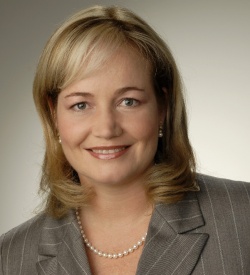Surgical site infections
Interview: Meike Lerner
Post-operative wound infection occurs after an estimated 17% of surgical operations – sometimes with devastating consequences for the patient. The list of preventive measures is manifold and long. However, one strategy is increasingly moving into the spotlight: the use of antibacterial coated sutures. Ethicon Products is at the cutting edge in this field. Sandra Rasche, head of this Business Unit at Ethicon Products, describes the current and future potential of innovative materials and, critically, their growing acceptance by surgeons.

Asked about the role the role a suture material plays in combating infection, Sandra Rasche said that this is only one factor in the concept of infection prevention – but often a decisive one. ‘The use of sutures cannot compensate for a lack of care with hand washing or the use of antibiotics. But, if you take into account that the surface area of abdominal sutures can be the size of a CD cover, the relevance becomes quite obvious. If the use of these innovative materials enables us to lower the infection rate by just a few percentage points this should still be considered a great success, because each infection causes extended suffering for patients. Moreover, postoperative wound infection can have significant economic consequences: According to studies many infections go hand in hand with extended hospital stays; in Germany alone it results in additional treatment costs of several hundred million euros a year.’
In view of those figures, one could assume that the experts were excited about the introduction of the first coated materials… ‘Strangely enough, this was initially not the case,’ she said. ‘Ethicon Products introduced the first coated materials in 2004 – with rather moderate success. This was not because the materials did not have the desired effect, but because the surgeons did not accept them, as initially there were no studies that statistically documented and confirmed problems associated with postoperative wound infection, doctors saw no need for action. This means that, essentially, we had the solution for a problem which, in their point of view, didn’t exist. Meanwhile, this has changed and there are valid figures documenting the frequency of wound infection and its consequences, along with figures on the efficiency of antibacterial-coated sutures.
‘Despite the initial acceptance issues, our strategy to continue our research in this field has paid off: Our product groups Vicryl, Monocryl and PDS (Polydioxanone Suture) cover about 80% of the worldwide market.
‘However, at the point when PDS Plus was introduced the reaction in hospitals had already changed significantly and the change to antiseptic materials had progressed a lot.
‘The relevant professional medical associations now also support the use of the materials, and we carry out joint training sessions and product introductions with them. We will continue to develop new, innovative weapons in the fight against SSI.’
Antibacterial sutures:
Vicryl rapid plus
Main indications: Skin and mucosa, episiotomy, oral mucosa, ophthalmology for the conjunctiva, skin closure, indications where fast absorption is useful, circumcision. Stems the growth of: Methicillin-resistant Staphylococcus aureus (MRSA), Methicillin-resistant Staphylococcus epidermidis (MRSE).
Vicryl plus
Main indications: Wound closure for soft tissue, ligatures, general surgery, ophthalmology, peripheral nerve anastomosis and microsurgery (vessels <2mm).
Monocryl plus
Main indications: Wound closure for soft tissue, ligatures, skin closure, bowel, peritoneum, uterus.
PDS-Plus
Main indications: For soft tissue, fascial closure, paediatric cardiac surgery, microsurgery and ophthalmology, patients with delayed wound healing. Creates a barrier against: Staphylococcus aureus, Staphylococcus epidermidis, Methicillin-resistant S aureus (MRSA), Methicillin-resistant S epidermidis (MRSE), Escherichia coli, Klebsiella pneumonia.
07.07.2010











